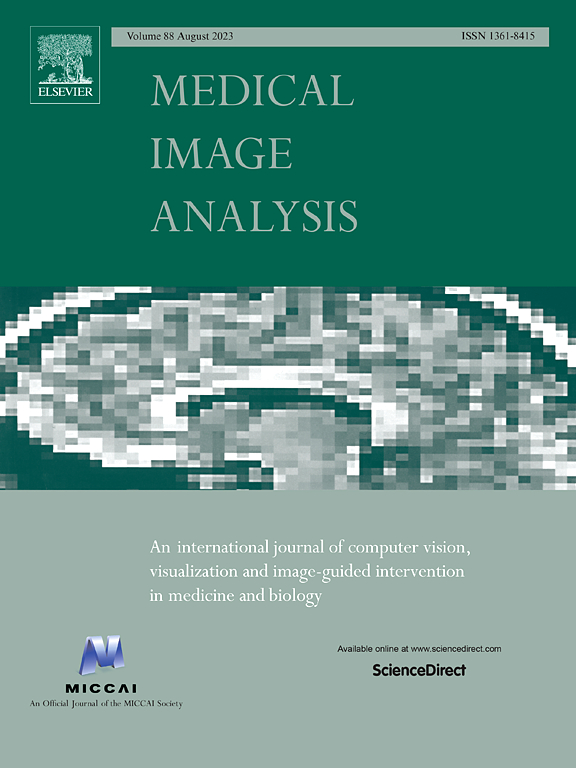TractGraphFormer: Anatomically informed hybrid graph CNN-transformer network for interpretable sex and age prediction from diffusion MRI tractography
IF 10.7
1区 医学
Q1 COMPUTER SCIENCE, ARTIFICIAL INTELLIGENCE
引用次数: 0
Abstract
The relationship between brain connections and non-imaging phenotypes is increasingly studied using deep neural networks. However, the local and global properties of the brain's white matter networks are often overlooked in convolutional network design. We introduce TractGraphFormer, a hybrid Graph CNN-Transformer deep learning framework tailored for diffusion MRI tractography. This model leverages local anatomical characteristics and global feature dependencies of white matter structures. The Graph CNN module captures white matter geometry and grey matter connectivity to aggregate local features from anatomically similar white matter connections, while the Transformer module uses self-attention to enhance global information learning. Additionally, TractGraphFormer includes an attention module for interpreting predictive white matter connections. We apply TractGraphFormer to tasks of sex and age prediction. TractGraphFormer shows strong performance in large datasets of children (n = 9345) and young adults (n = 1065). Overall, our approach suggests that widespread connections in the WM are predictive of the sex and age of an individual. For each prediction task, consistent predictive anatomical tracts are identified across the two datasets. The proposed approach highlights the potential of integrating local anatomical information and global feature dependencies to improve prediction performance in machine learning with diffusion MRI tractography.
利用深度神经网络研究大脑连接与非成像表型之间关系的研究越来越多。然而,在卷积网络设计中,大脑白质网络的局部和全局特性往往被忽视。我们介绍了 TractGraphFormer,这是一种专为弥散核磁共振成像束成像定制的混合图形 CNN-Transformer 深度学习框架。该模型充分利用了白质结构的局部解剖特征和全局特征依赖性。Graph CNN 模块捕捉白质几何图形和灰质连接,从解剖学上相似的白质连接中汇总局部特征,而 Transformer 模块则利用自我关注来增强全局信息的学习。此外,TractGraphFormer 还包括一个用于解释预测性白质连接的注意力模块。我们将 TractGraphFormer 应用于性别和年龄预测任务。TractGraphFormer 在儿童(n = 9345)和年轻成人(n = 1065)的大型数据集中表现出强劲的性能。总体而言,我们的方法表明,WM 中的广泛连接可以预测一个人的性别和年龄。在每个预测任务中,两个数据集都发现了一致的预测解剖束。所提出的方法强调了整合局部解剖信息和全局特征依赖性的潜力,以提高机器学习中弥散核磁共振成像束成像的预测性能。
本文章由计算机程序翻译,如有差异,请以英文原文为准。
求助全文
约1分钟内获得全文
求助全文
来源期刊

Medical image analysis
工程技术-工程:生物医学
CiteScore
22.10
自引率
6.40%
发文量
309
审稿时长
6.6 months
期刊介绍:
Medical Image Analysis serves as a platform for sharing new research findings in the realm of medical and biological image analysis, with a focus on applications of computer vision, virtual reality, and robotics to biomedical imaging challenges. The journal prioritizes the publication of high-quality, original papers contributing to the fundamental science of processing, analyzing, and utilizing medical and biological images. It welcomes approaches utilizing biomedical image datasets across all spatial scales, from molecular/cellular imaging to tissue/organ imaging.
 求助内容:
求助内容: 应助结果提醒方式:
应助结果提醒方式:


